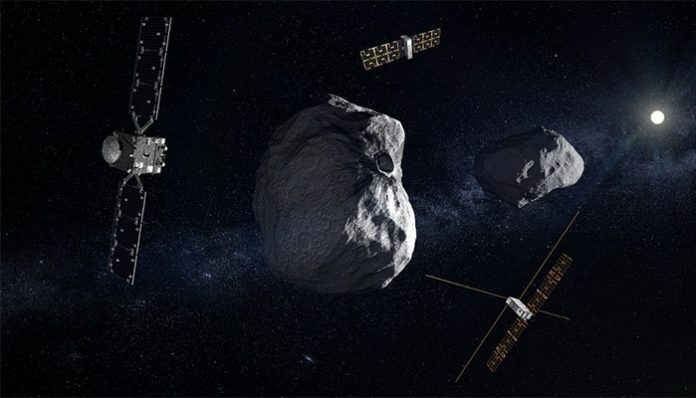The weather appeared unpromising on Monday morning before the European Space Agency’s (ESA) Hera mission launch from Cape Canaveral, Florida, at 10:52 a.m. ET. Fortunately, conditions improved, allowing the Hera spacecraft to successfully launch aboard a SpaceX Falcon 9 rocket. This mission marks the beginning of a two-year journey to a double asteroid system beyond Mars.
Hera is a follow-up to NASA’s successful Double Asteroid Redirection Test (DART) mission, which impacted the smaller asteroid, Dimorphos, in September 2022. The primary goal of the DART mission was to demonstrate the ability to alter an asteroid’s orbit. Before the impact, Dimorphos orbited its larger counterpart, Didymos, every 11 hours and 55 minutes. The DART impact shortened that orbit by 33 minutes, sending a plume of debris over 10,000 kilometers into space.
The Hera mission, part of the Asteroid Impact and Deflection Assessment (AIDA), aims to provide further insight into the results of the DART mission. As Paolo Martino, Hera’s deputy project manager, noted, “Planetary defense is an extremely important initiative worldwide… the question about asteroid impact is not if, but when.” This sentiment underscores the critical need for research and preparedness in the face of potential asteroid threats.
The Hera spacecraft, approximately 1.6 meters wide with solar arrays extending to 11.5 meters, is accompanied by two CubeSats. Juventas will assess the gravity field and internal structure of Dimorphos, while Milani will map the asteroid and study the aftermath of the DART impact, including any dust clouds in the vicinity.
The mission is designed to answer lingering questions from the DART impact, including the crater’s size and depth and the volume of material displaced. Mike Daly, a professor at York University’s Lassonde School of Engineering and a co-investigator on DART, highlighted the importance of this follow-up mission: “Hera is going to pick that up,” he stated.
Hera is expected to arrive at the asteroid system by late 2026, depending on the launch schedule. Although the Federal Aviation Administration (FAA) has grounded SpaceX due to a previous incident, Martino indicated that there is a 21-day launch window for potential delays.
The need for planetary defense became evident following a comet impact on Jupiter in 1993 and an asteroid explosion over Chelyabinsk, Russia, in 2013, which injured over 1,000 people. Daly remarked, “We really are the first generation that have the knowledge and the technologies that could prevent what could be a pretty disastrous outcome on Earth.” This mission exemplifies humanity’s proactive steps in planetary defense, paving the way for future asteroid mitigation strategies.















